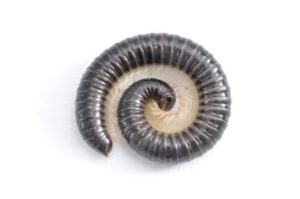 If you haven’t been invaded by millipedes yet, consider yourself fortunate. Millipedes are a seasonal pest which have made their annual return in a big way.
If you haven’t been invaded by millipedes yet, consider yourself fortunate. Millipedes are a seasonal pest which have made their annual return in a big way.
Months of rain have provided moisture and food to a number of uncommon pests that only occur following specific weather conditions.
According to Dr. Arthur Appel and Dr. Xing Ping Hu, most unusual pests are, in fact, not insects at all, but other types of arthropods.
Insects have a thin layer of wax coating their entire exoskeleton that helps to water-proof them and keep them from drying out. Most of the unusual pests do not have this wax coating and will rapidly desiccate in a dry environment.
This is why piles of dead millipedes and pill bugs are often found in hot dry garages. The garden millipede is probably the most common of the unusual pests. Adults are about an inch long and chestnut brown in color.
They can build up in tremendous numbers under moist mulch, leaf litter, and even lawn thatch. After the population reaches adulthood, and if the conditions are right (warm and very humid nights), the millipedes will begin to migrate. They can cover driveways, enter garages, and even enter homes and buildings.
Some pesticides will offer some relief to this type of problem, however reducing the moisture levels around homes and buildings is the best way to eliminate the problem.
Watering the lawn in the morning rather than at night will allow the excess water to evaporate as opposed to sit overnight. By keeping the grass short and edged, bagging clippings, removing fallen leaves and other debris as soon as possible, and reducing mulch to not more than three inches you can minimize a millipede invasion.

